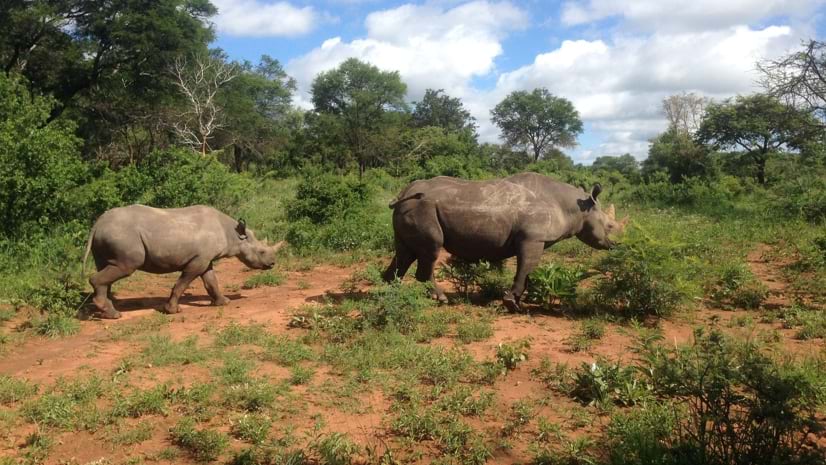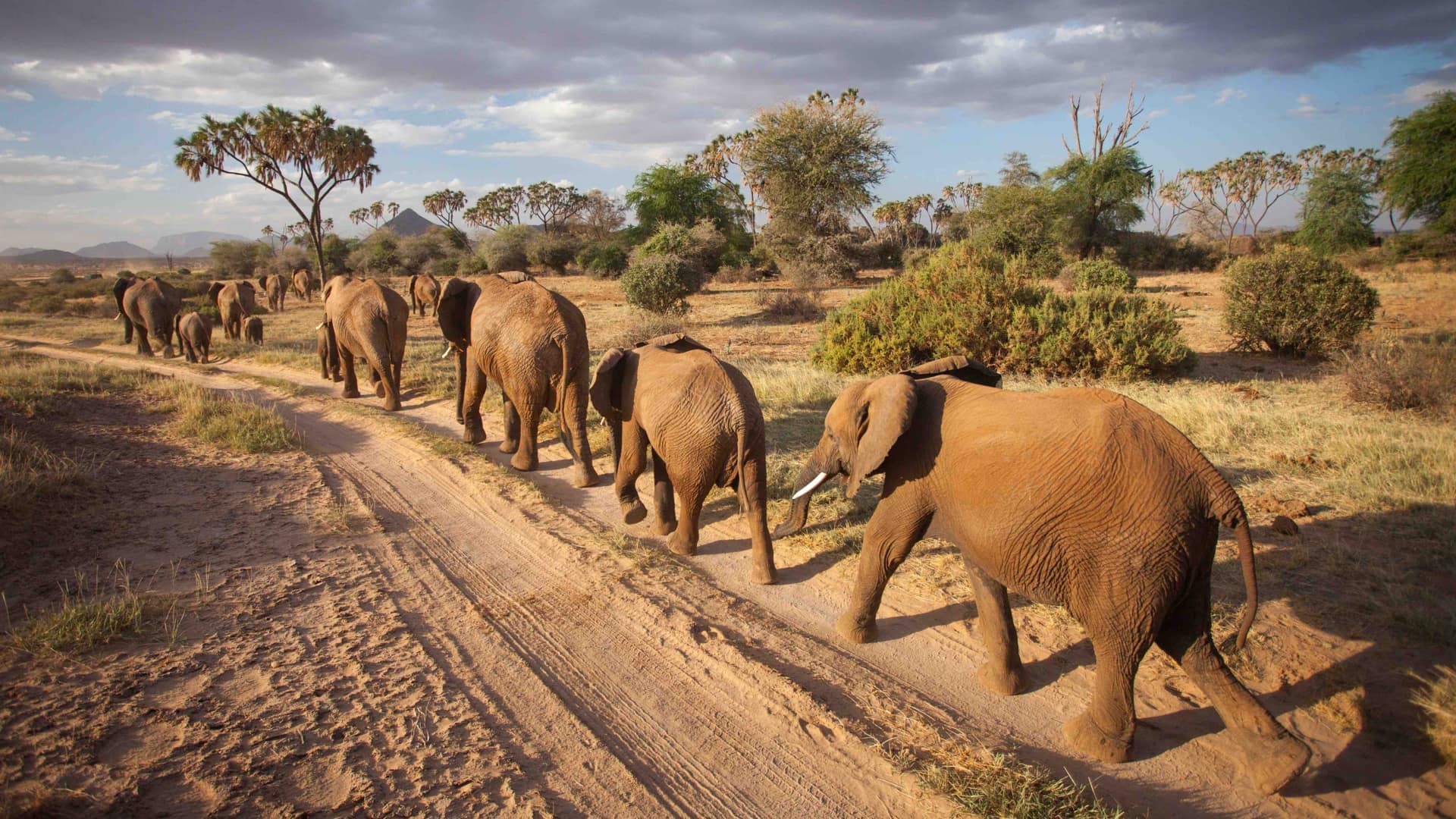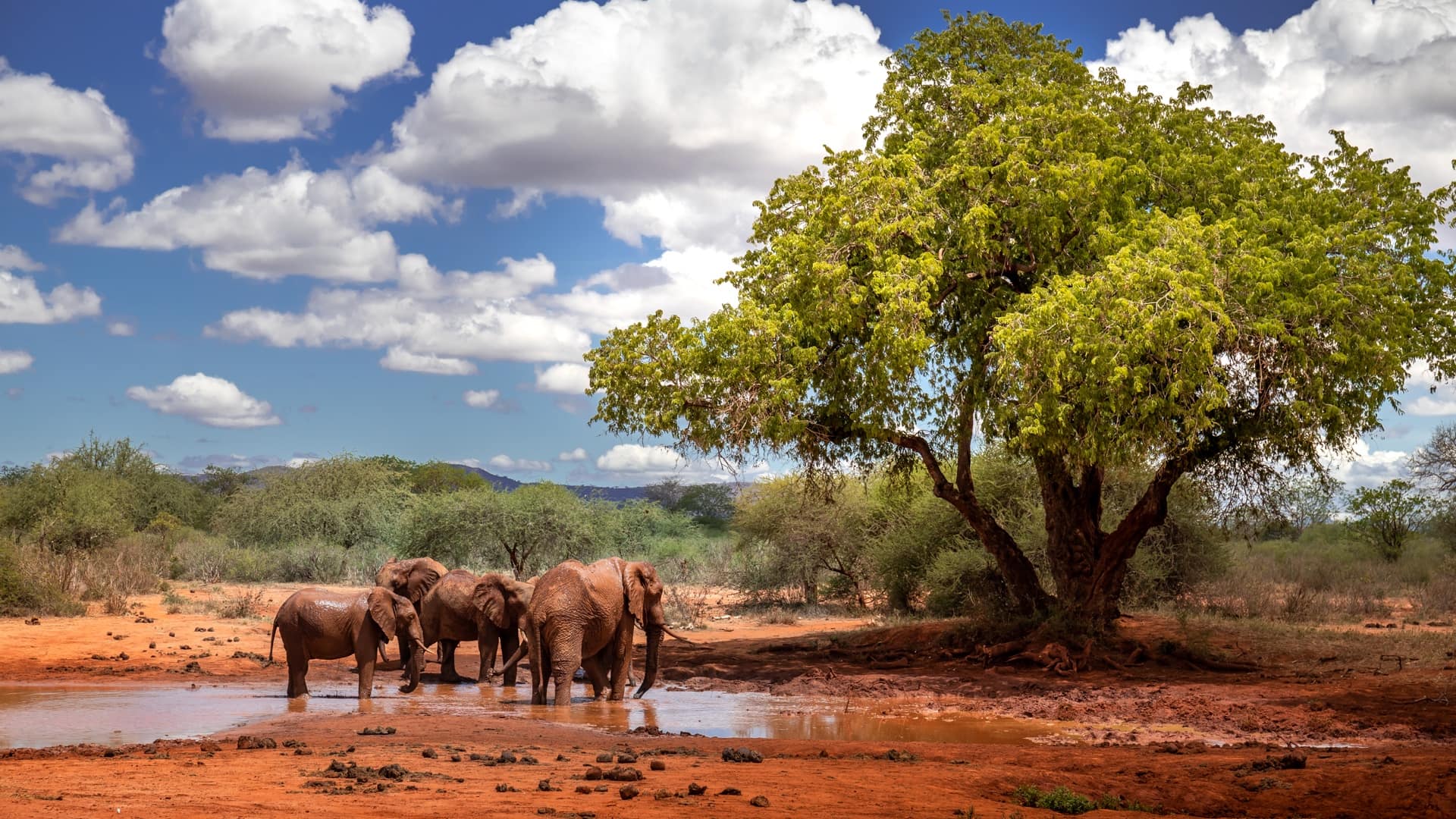

May 9, 2023

Ask Catherine Ressijac what inspired her career and pursuit of a PhD in conservation biology, and she will tell you it started with an undergraduate trip to a conservancy in Zimbabwe. “Like most people who have experienced a safari or a deeply hands-on experience in a savanna ecosystem, it’s easy to have your heart captured.”
The experience led Ressijac to work at Imire Rhino & Wildlife Conservation for two years before returning to graduate school. During her tenure, she learned about the conservancy community, conducted research, and monitored species. Early on, she recognized a need to fill in gaps in the data collection process at Imire.
During her pursuit of a master’s in Conservation Medicine from Cummings School of Veterinary Medicine, a geographic information system (GIS) course unlocked a path forward.
“I had this aha moment that I could hand a mobile app to a ranger with deep ecological knowledge, and they could capture data in the field in such an easy way. And then someone far away like me could access, manage, and draw insights from it,” Ressijac said.
When she returned to Imire for her master’s thesis, she worked with rangers to implement ArcGIS Survey123, an easily configured GIS app for phones and tablets. The data that came back made her eager to access more of the knowledge rangers have gleaned observing wildlife.
“Not only should we be harnessing their knowledge and inviting them to participate in the more formal or systematic scientific process, but we should also be celebrating and crediting rangers for their contributions to conservation science,” Ressijac said.
Black rhinos are central to Imire’s identity. The preserve was awarded custody of seven rhinos in 1987. Under the protection of conservancy rangers and staff, they have successfully bred 16 rhinos in the last 20 years, with the most recent calf born in February 2023. Still, the animals are critically endangered due to poaching for their horns. There are only 5,500 left according to the World Wildlife Fund.
“Scientifically we don’t know much about rhino behavior and movement ecology. But with the Imire rangers patrolling them daily, they have a uniquely intimate understanding of Imire’s individual rhinos, their habits and personalities, how they use the landscape they occupy, and how they interact with each other and other species,” Ressijac said.
While Ressijac sees rangers as “dynamic field scientists who provide a key data resource,” she notes a common challenge in conservation management: the ability to sustain data collection and scientific research. Some scientists don’t share their findings with rangers or managers. In addition, they may bring technologies that are not useful for conservancy staff.
So Ressijac sat down with rangers to test how well Survey123 could fill their data gaps. “I asked them exactly what questions they had about rhinos, about the information they wanted to be captured, how they wanted to collect it, and they had great ideas constantly for me.”
The fact that Survey123 works offline was an important capability for rangers who collect data in areas without internet access. Pinning the data to where it was collected allows it to be mapped and visualized by anyone on the Imire staff.
As rangers worked with Ressijac to build the surveys and reports, the collaboration helped adapt the app to meet conservancy needs and gave rangers more autonomy over the data collection process. Improvements included an in-app function to capture photos and add them to their reports. They also removed tedious questions like weather reports and thoughtfully added questions about rhino behaviors.
The first collaborative surveys collected data on the black rhino diet; behaviors such as walking, lying down, resting time, eating, scent marking, and defecating; and social cues like movements and mating events.
Ressijac’s first foray into rhino data collection for her masters thesis allowed her to provide management with insights into rhino habitat use, seasonal dietary trends, and individual behavior. The initial surveys she created proved to be a powerful tool for capturing mother-baby dynamics and milestones for the calf, such as suckling, playing, eating, and exploring.
Ressijac has continued to develop surveys well beyond the initial work for her thesis at Tufts University. The workflows have quickly caught on, and the surveys have transformed into a meaningful tool for rangers and managers to capture wildlife data and gain insights.
Now, Imire rangers and staff utilize GIS maps and analysis to communicate capacity needs, track territorial overlaps or fights, and understand their rhino population. “Having this deeper understanding helps us determine where to relocate a rhino or if we have space for others, and how these changes impact the conservancy over time,” Ressijac said.
A map of grazing resources showed that the white rhino population could be expanded, solidifying plans to translocate six new white rhinos to Imire in 2023. When these rhinos arrive, they will be added to the survey system to see how they establish and interact with existing white rhinos.
In the years since deploying the first survey, Ressijac has seen staff buy-in, and received many requests for customized reports. Most importantly, the technology has gained support for a data-driven, adaptive management style.
“Data provides an insurance policy in many ways for any manager, whether you’re at a small reserve or a national park, to back up why you make decisions the way you do,” Ressijac said.
Ressijac is proud of what they have been able to accomplish. “Imire is unique because it’s like a living laboratory where rangers make it possible to really learn about rhino ecology through monitoring and data collection. Looking back over a decade, I can see how Imire has adapted and how I have evolved as a conservationist by working together in this dynamic environment.”
In the short term, she hopes to continue developing custom wildlife monitoring surveys based on what the conservancy needs, such as the introduction of new animal species. She also wants to connect the program to a Zimbabwean academic institution to have an on-the-ground point person for research. This shift would allow rangers to better balance their daily anti-poaching and wildlife monitoring duties.
Looking to the future, Ressijac hopes to take her passion for collaboration to more conservation organizations. “The most rewarding part of my journey has been the perspective gained from long-term involvement in a conservation initiative. We have a lot to learn from one another, and there are so many large problems in conservation that will only be tackled by working together.”
Learn more about how conservation organizations preserve biodiversity with GIS.


